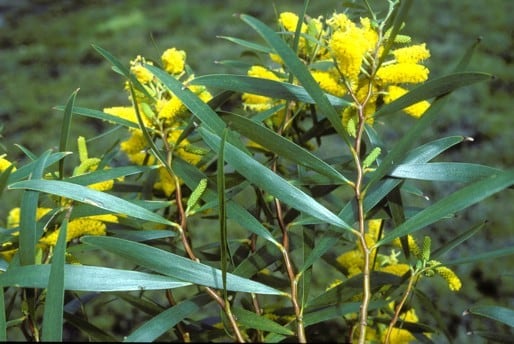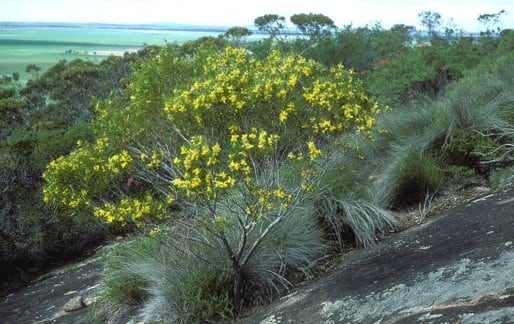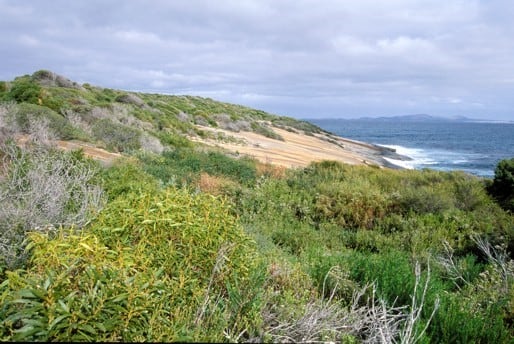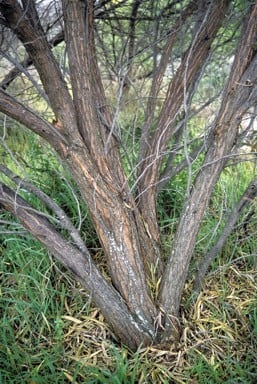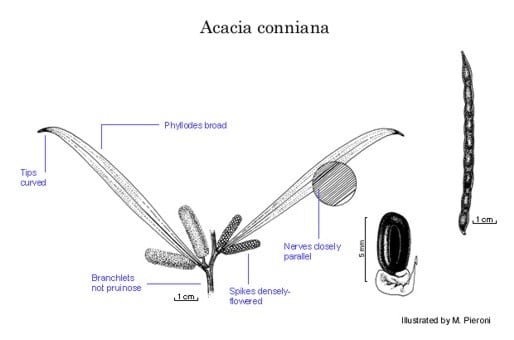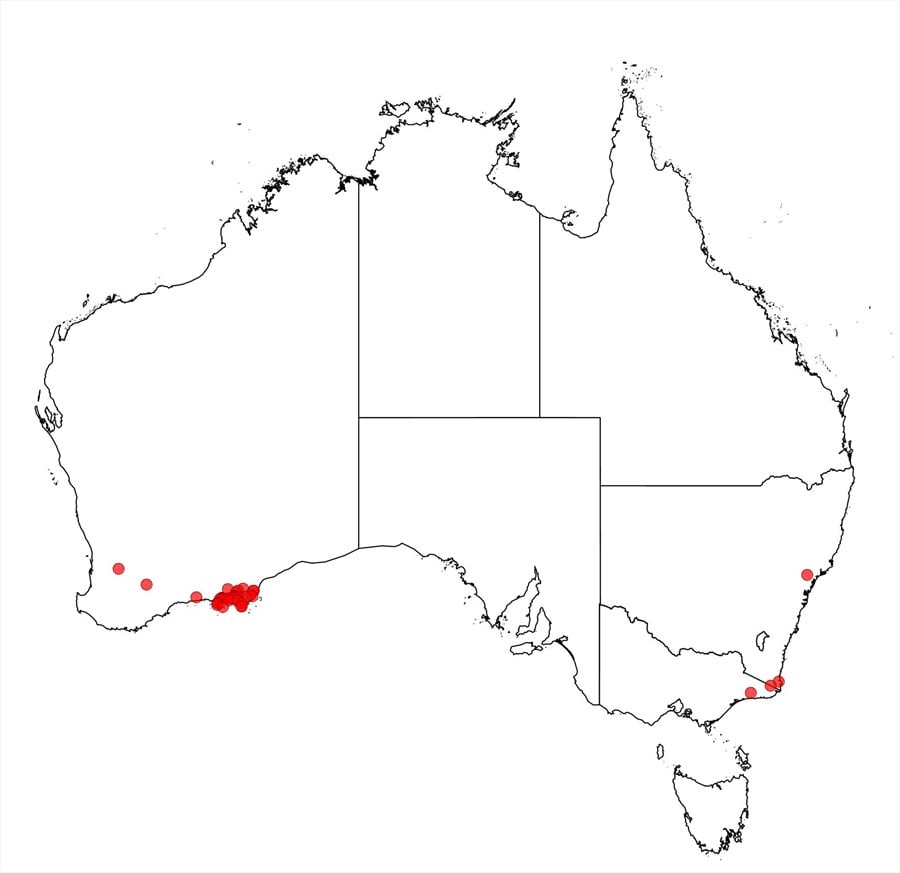Acacia conniana Maslin
WATTLE
Acacias of Australia
Family
Fabaceae
Distribution
Occurs in southern regions of W.A. in coastal areas extending 40 km inland, from Cape Le Grand to Israelite Bay, and on Mondrain and Middle Is., Recherche Archipelago, E of Esperance.
Description
Shrub 2–6 m high, dense, bushy, glabrous. Bark longitudinally fissured at base of main trunks, grey or dark red-brown. Branches non-pruinose. Young tips very resinous. Phyllodes ascending to erect, not lax or pendulous, (5–) 7–16 cm long, 3–12 mm wide, with markedly recurved apex, thinly coriaceous, green, obscurely multistriate, with prominent midnerve and 2 subprominent nerves; gland minute, basal; pulvinus 1.5–3 mm long. Peduncles 4–10 mm long, glabrous. Spikes on short axillary branchlets, 1–2.5 cm long, dense, golden. Flowers 5‑merous; calyx united, costate or ±5-sided, with ribs densely hairy; petals free, glabrous. Pods linear, slightly raised over seeds, to 10 cm long and 3–4 mm wide, coriaceous to thinly crustaceous, glabrous. Seeds to 5 mm long; areole closed or with narrow opening.
Phenology
Flowers Sept. & Oct.
Habitat
Usually associated with granite rocks.
Specimens
W.A.: SE base of Mt Arid, A.N.Rodd 5132 (BRI, K, NSW, PERTH); Mt Howick Hill, c. 76 km E of Esperance, P.G.Wilson 8125 (NSW, PERTH).
Notes
Allied to A. doratoxylon (N.S.W., Vic.) and A. lasiocalyx (W.A.). Both A. conniana and A. lasiocalyx often grow on granite rocks.
FOA Reference
Data derived from Flora of Australia Volumes 11A (2001), 11B (2001) and 12 (1998), products of ABRS, ©Commonwealth of Australia
Author
Dr M.D.Tindale and Dr P.G.Kodela with the assistance of M.Bedward, S.J.Davies, C.Herscovitch, D.A.Keith and/or D.A.Morrison
Minor edits by J.Rogers
This identification key and fact sheets are available as a mobile application:
URL: https://apps.lucidcentral.org/wattle/
© Copyright 2018. All rights reserved.
